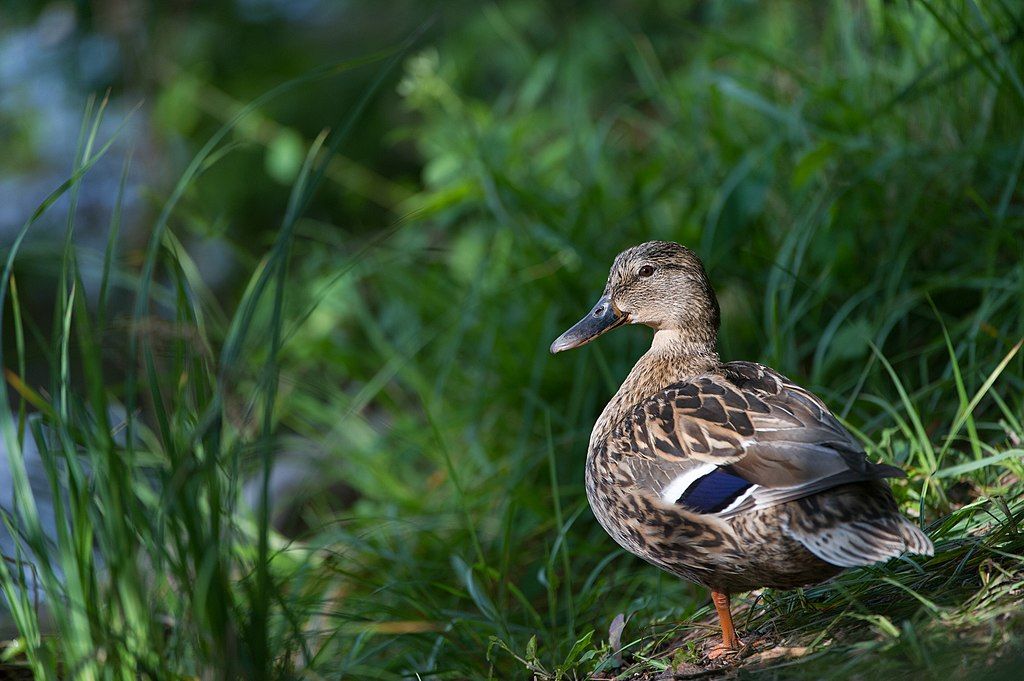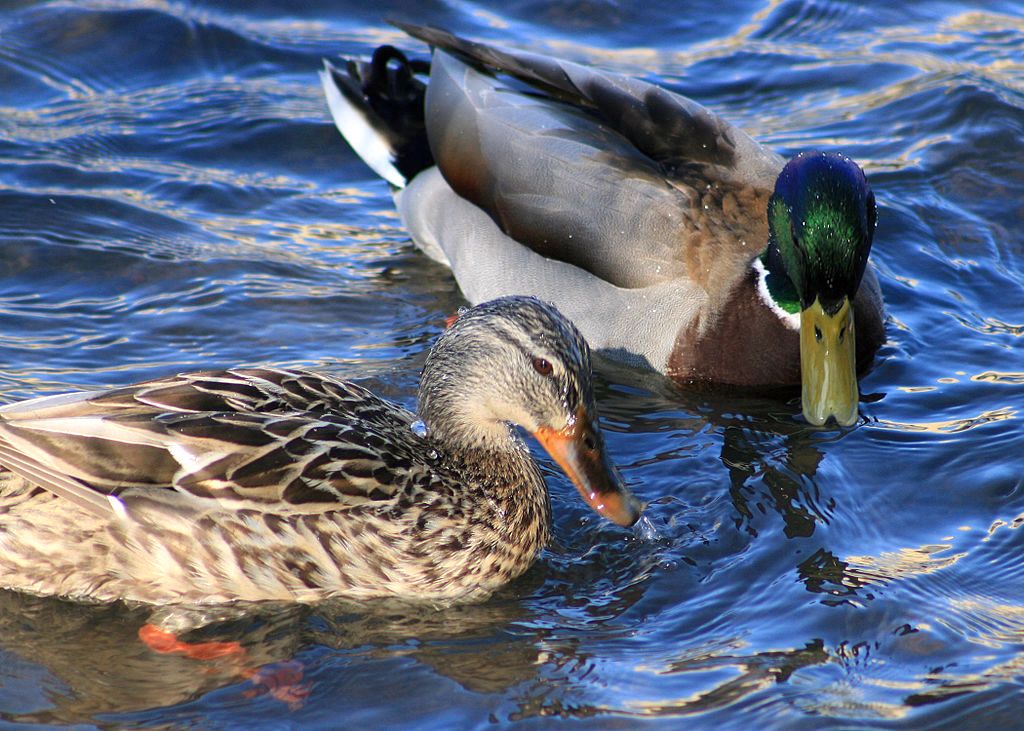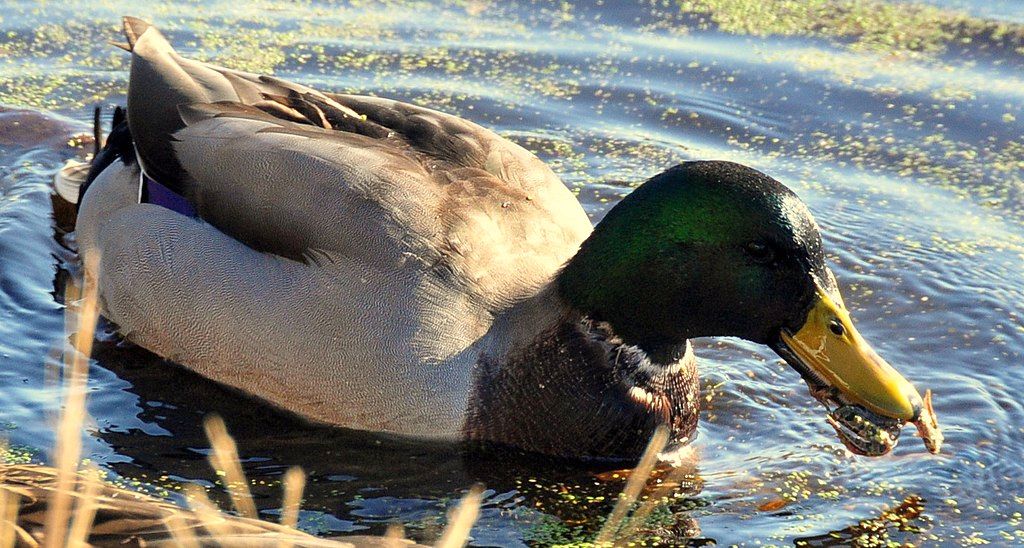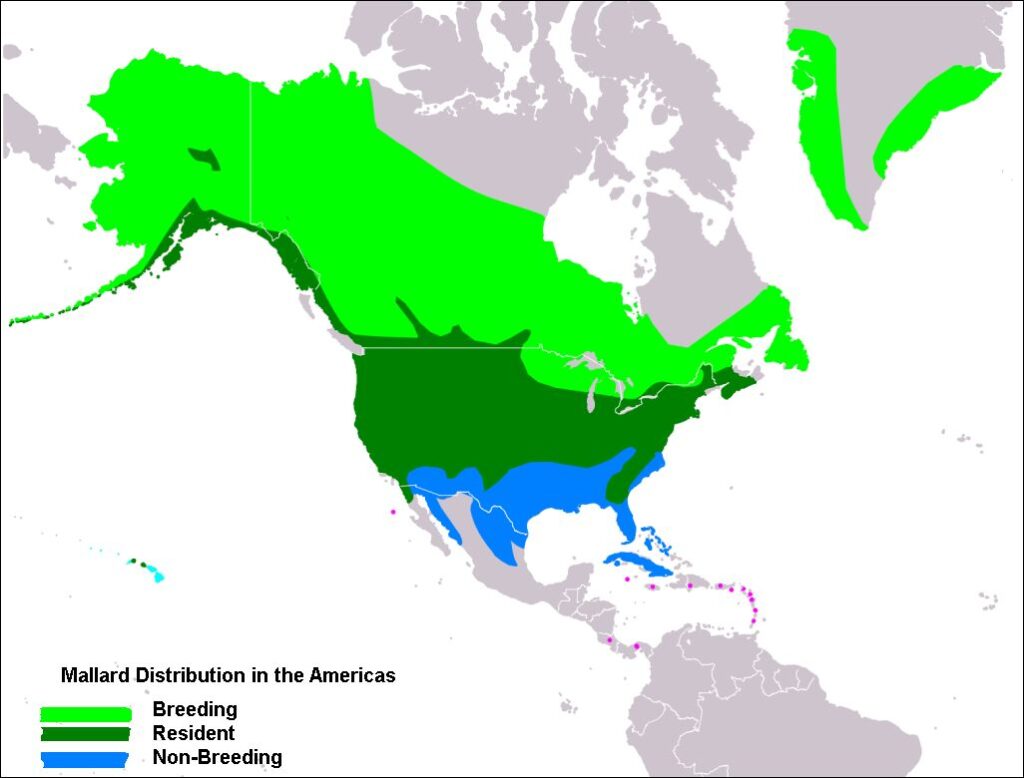
9 March 2022
We think of mallards (Anas platyrhynchos) as dabbling ducks that eat plant material and bread tossed by humans(*) but these common ducks are actually omnivorous and opportunistic. Their diet depends on time of year.
On migration and in winter mallards are basically vegetarian, eating seeds, acorns, aquatic vegetation, cereal crops, and in urban areas human-provided bread and birdseed.

During the breeding season mallards add meat to their diet including gastropods (snails), insects, crustaceans (such as crayfish) and worms.

They’ve been known to eat frogs (see above) and in one surprising episode in 2017 a flock of mallards in Romania were observed hunting small migratory birds including grey wagtails and black redstarts.
Fortunately small bird consumption is quite unusual and unnecessary. Males and non-laying females eat only 37% animal matter in the breeding season while laying females consume 71.9% animal matter to meet their energy needs.
I saw a pair of mallards mating at Panther Hollow Lake last weekend so I know the breeding season has begun in Pittsburgh. Laying females will be bulking up on snails, insects and worms.
Meanwhile most mallards are still on migration to their breeding grounds. They will change their diet soon.

(*) p.s. Mallards eat bread but it has very poor nutrition and is actually bad for them. See Bread is Bad for Birds.
(photos and map from Wikimedia Commons; click on the captions to see the originals)
In February 2013 I photographed mallards on a beach north of Boston that were feasting on clams that had been washed ashore in great numbers after a huge storm. They certainly seemed to be enjoying them. I was impressed by their adaptability and willingness to take advantage of such an unusual food source. How did they even know there was food for the taking on the beach?